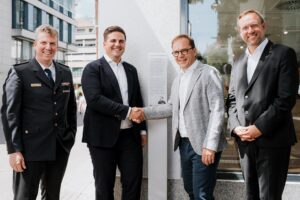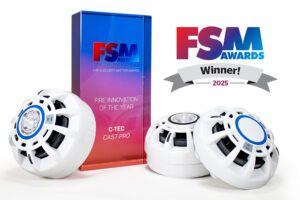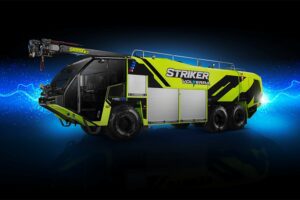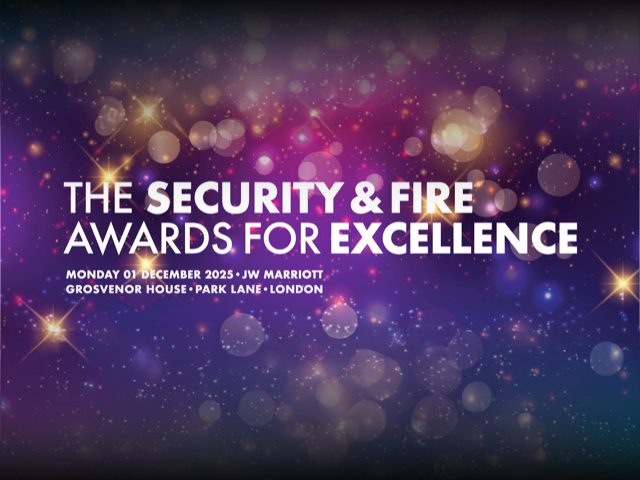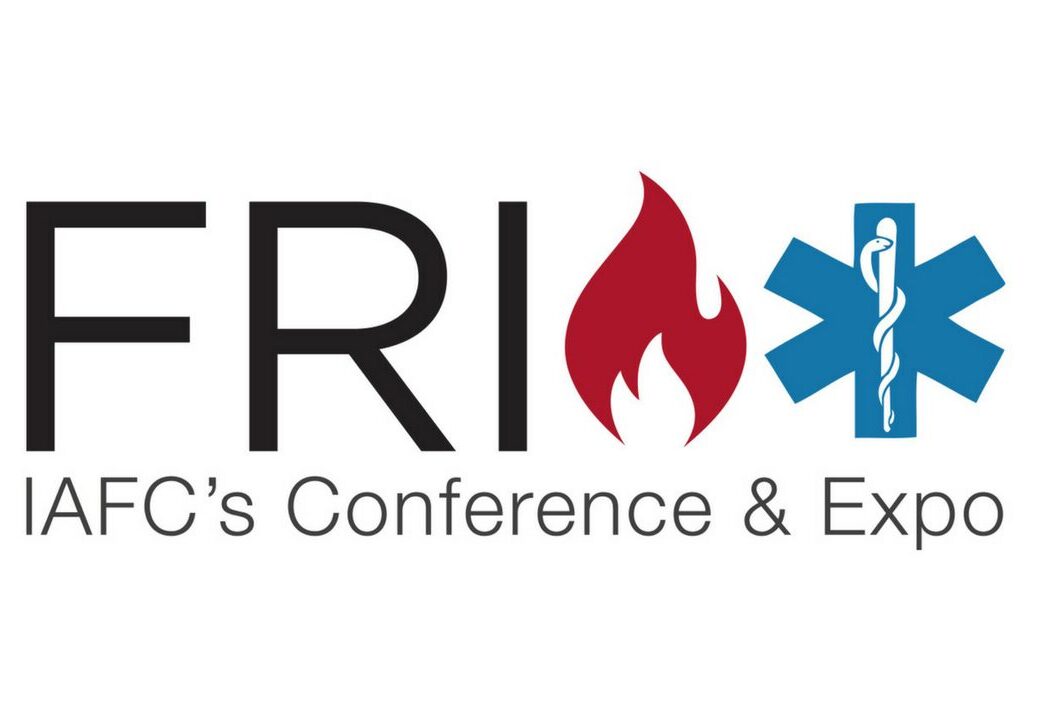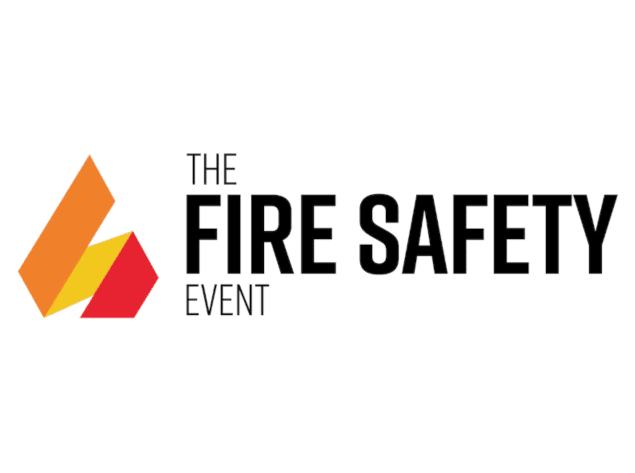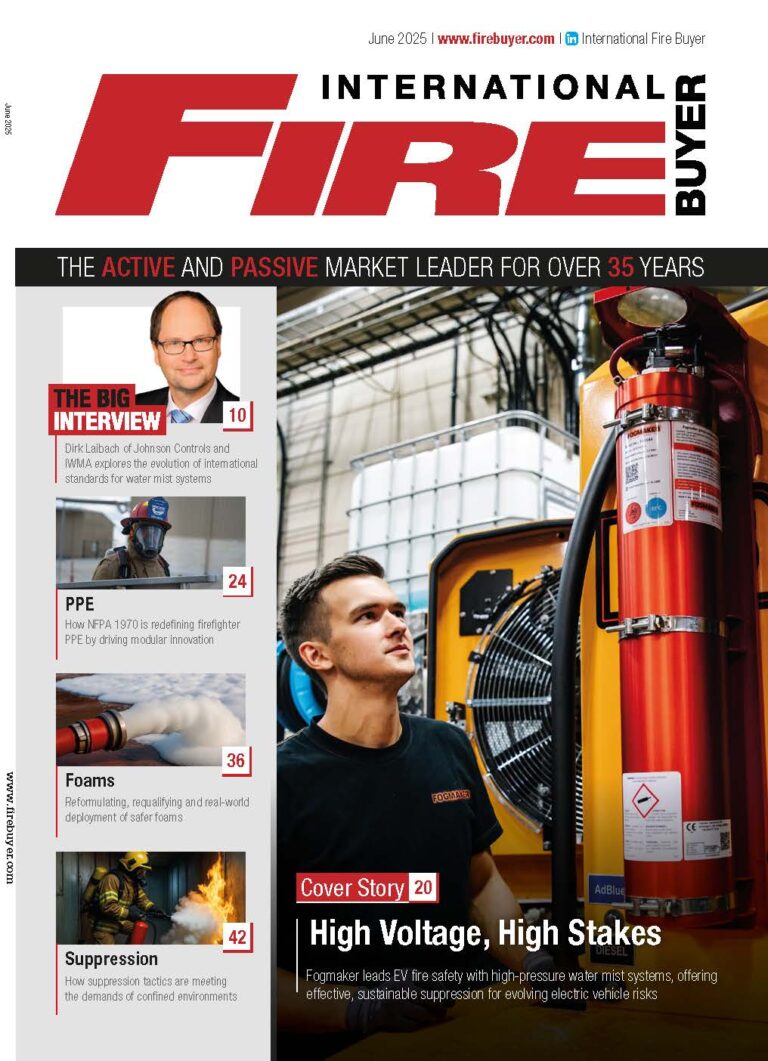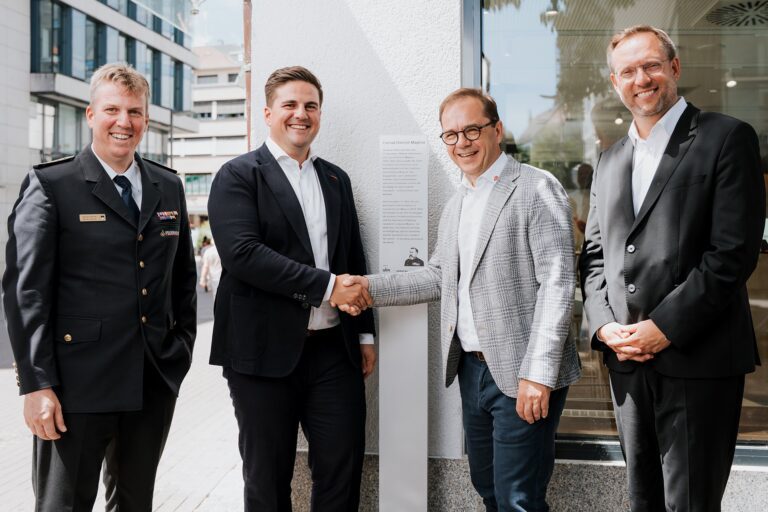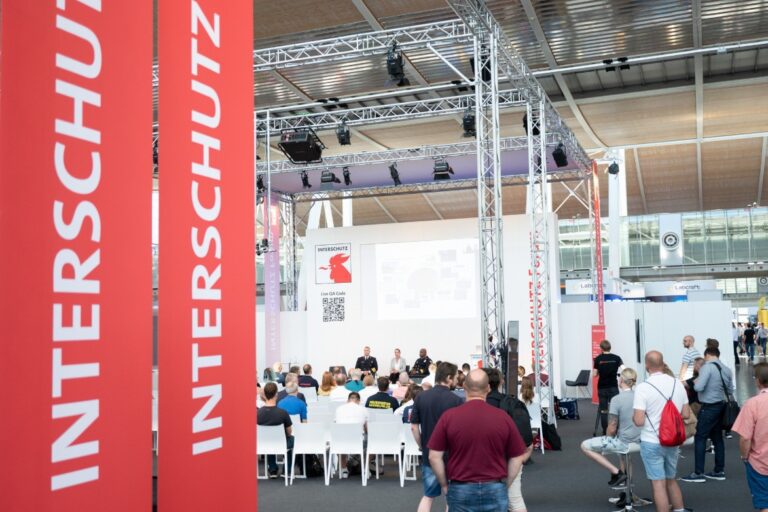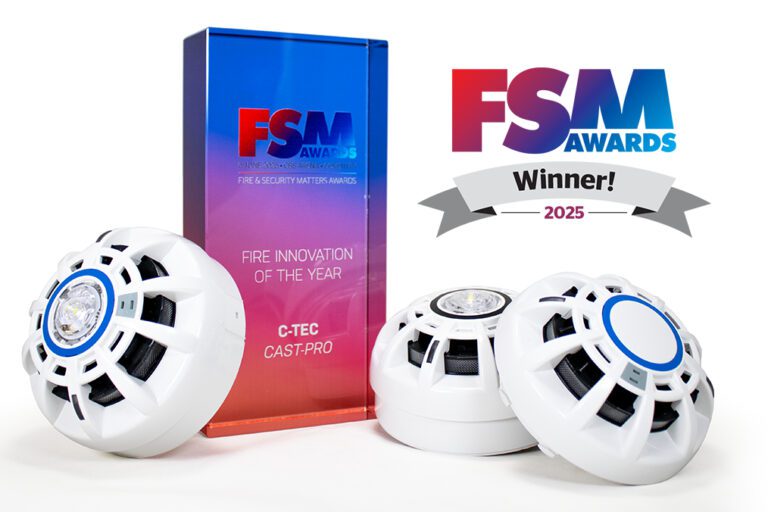
Central to their success is their commitment to R&D and their adherence to standards compliant manufacturing accreditations in their products. NAFFCO operates an ISO quality management system and many products have been approved UL and FM (in accordance with the international standards of NFPA). Throughout the engineering divisions, you will find a commitment to excellence and innovation, from fire pumps to extinguishers, fire cabinets to hoses.
New products
In 2011 Naffco launched its Falcon range of airport fire rescue vehicles, for which it takes great pride, being the only company outside Europe and the US to have engineered and manufactured such highly advanced vehicles. Also at this years Intersec exhibition in Dubai , they showcased several new product lines not least the innovative Pyrolance (www.pyrolance.com) piercing, cooling and extinguishing ‘gun’ and the remote fire safety monitoring system ‘Falcon Eye’ www.falconeye.me.
Diversification of product lines is a also a key feature of Naffco’s success having set up an autonomous piping division (Naffco Flow control). They are also in the process of launching a green technology range as well as getting involved in the security arena.
Fire prevention principles
Through all these areas of operation the business philosophy comes back to fire prevention and as much time and effort is spent on encouraging best practice in this area as it is on product development. Of course, one of the areas where fire prevention can be most effective is in the design and planning stages of industrial projects. We all know what happens in the media when a fire disaster occurs as a result of negligence in design of fire systems. With this in mind, we talked to Desmond Gardner of Naffco’s Industrial Unit which is responsible for much of the Engineering Design activity at Naffco. We asked him what he would recommend as an effective approach to the design process.
Fire Protection is not a compliance issue put together to satisfy the legal requirements of the authority having jurisdiction. It is an integral part of the business plan.
Without a comprehensive plan the business can be badly affected by fire with loss of life and damage to assets.
The effect of fire risks can be minimised by insurance but loss of life makes the subject of selecting the correct fire fighting technologies and systems very important.
Technologies are driven in the main by three sources:
Clients who have to provide protection in extremely hazardous environments, typically the military, power, oil and gas, nuclear, chemical and transport industries;
Authorities having jurisdiction who wish to provide safety for their personnel and the public;
Insurance companies who wish to minimise there risk.
Hazard driven
In the hazard driven area many good technologies have been developed which have then been adopted by others to provide protection.
Examples of this are:
Explosion Protection – Military & Chemical
Engine Fire Protection – Military & Aircraft
Both of the above led to a need for gas & dry chemical suppression systems which are now widely used in electrical rooms, machine rooms, telecom rooms and others.
Authority Having Jurisdiction & Insurance Companies
When technologies were being developed some worked while others were a failure but because owners were not aware they bought these without due consideration, lives were lost and property still damaged.
This brought about the formation of independent bodies to test the effectiveness and quality of products being produced.
Thus the birth of standards and approval bodies, the best known in the region being NFPA, UL and FM, LPCB and Civil Defence.
Authorities having jurisdiction and insurance companies rely on these standards to provide a meaningful level of security, Ensuring that systems are designed and approved within the requirements of these standards and qualifications provides the necessary protection required.
What does all this mean?
This means that not all the answers are contained within these standards
and product qualifications.
The reason is simply this – every design has its own risks and yes, some may be common but certainly not all.
In particular Hi-rise buildings bring a very different set of hazards
– the most important being:
Evacuation of the building
Access for civil defence personnel
Supply of suppression mediums particularly water.
Evacuation
In Hi-rise buildings, evacuation is very problematic and needs very careful study.
This involves:
Hi-floor extraction;
Safe rooms while awaiting extraction;
Areas where extracted people can safely be processed away from the building;
Smoke management;
Pressurised stairwells and lobby areas.
Access for Civil Defence
Civil Defence access is not only about the building but also about the deployment and assembly of all the services required to execute a well constructed plan with due consideration of:
Initial response activities;
Assembly areas for response vehicles;
Communication systems – Fireman’s telephone system;
Building fire equipment;
Building access;
Dedicated firemen lifts with fire rated protection and pressurisation;
Duration;
Medical facilities.
Supply of Suppression Mediums
Water supply in Hi-rise buildings is very critical on three levels:
Protection of all risers and standpipes;
Provision of sufficient redundancy and reliability;
Provision of sufficient water.
To achieve this, consideration must be given to:
Providing risers in separate shafts and interlinking these;
Reducing the number of pumps and dependent mechanical systems
This can be achieved by considering gravity feed systems.
Fire Control
The control of fires is very critical in Hi-rise buildings and there should be no compromise in the application of the correct sprinkler systems.
This requires the entire building to be sprinkled including, chutes, machine rooms, basements and car-parks.
In areas where sprinklers can cause damage which will effect the communication within the building then other mediums must be selected such as water-mist and gas suppression systems.
Smoke management is very important and the use of pressurised stairwells and lobby areas needs careful consideration as well as the extraction of smoke particularly in basement areas.
Standards
The following standards provide a vehicle for design:
NFPA 101 – Life Safety Code
NFPA 10 – Standard for Portable Fire Extinguishers
NFPA 13 – Standard for Automatic Sprinkler Systems
NFPA 14 – Standard for Standpipe Systems
NFPA 20 – Standard for Stationary Pump Installation
NFPA 22 – Standard for Water Tanks
NFPA 24 – Installation of Private Fire Service Mains
NFPA 92 A – Recommended Practice for Smoke Control Systems
NFPA 92 B – Guide for Smoke Management Malls
BS 5266 – Standard for Emergency Lighting
BS 5839 – Standard for Fire Detection and Alarms
International Building Code
Process Out Puts
Develop, plan and manage a comprehensive life safety and evacuation strategy
Consult experts in the field
Use international standards and best practice
Choose equipment which is best suited to the situation
Do not specify products – specify standards of compliance
Own the process
Choose a Fire Protection Specialist
Elements to consider
RESPONSE VEHICLES
DELUGE SYSTEMS
SPRINKLER SYSTEMS
FOAM & POWDER SYSTEMS
GAS SUPPRESSION SYSTEMS
SPRAY SYSTEMS
FIRE PUMP SYSTEMS
WATER MIST SYSTEMS
HYDRANT SYSTEMS
HOSE REEL & ASSOCIATED EQUIPMENT
MEDICAL SYSTEMS
LIFE SAFETY EQUIPMENT
Landmark projects
NAFFCO’s excellent reputation has enabled the company to be involved in a large number of landmark projects in a wide range of industries. “The markets we deal in include residential buildings, commercial complexes, telecommunication centres, industrial installations, oil refineries and petrochemical plants, airport installations, power plants and substations, and the metal processing industry,”
One of the most important projects the company has been involved in is the Burj Khalifa in Dubai – the tallest tower in the world For the Burj Khalifa, NAFFCO provided and installed the fire fighting system consisting of fire hose reels, wet risers and landing valves; the sprinkler system consisting of different types of sprinklers like upright and sidewall sprinklers, which are recessed sprinklers connected by zone control and alarm check valves; and the gas suppression system consisting of HFC-227ea gas with fire extinguishing panel, abort switch, manual release, manual actuator, fire alarm bell and flashers. This equipment was installed under NAFFCO supervision and is monitored by the main fire alarm panel. It also installed the pre-action system consisting of a control panel, pre-action valve, air compressors and sprinklers; the foam deluge system consisting of foam control panel, deluge valve, foam tank and nozzles; and the external hydrant consisting of a valve, which is installed outside the building premises and is connected to the fire pump. All the design, supply, supervision of installation, testing and commissioning and final hand-over was done by NAFFCO as per NFPA (National Fire Protection Association) standards and local authority approvals






